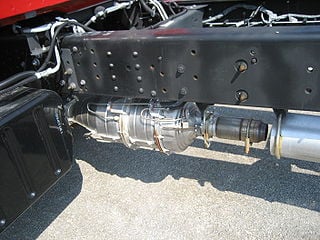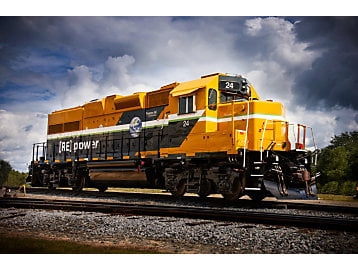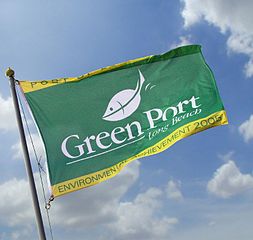Background
California’s transportation system, which consists of highways and roads totaling more than 175,000 miles, is valued at around $1.5 trillion. The Golden State, moreover, has north of 500 transit agencies, 12 major ports and an 800-mile total high-speed rail system now under construction. There is more to the state transportation network, so much more. (See: “California Transportation Plan 2040”).1
Going back some 33 years, this is when the biennial Smog Check Program emissions testing for registered motor vehicles in state, went into effect. (See entry for 1984 here. Note: In the dates column, scroll down to 1984 and mouse-click on that date to open corresponding entry).
And, backing up a few more years to 1980, as shown in the entry, meanwhile, state population was 24 million people. The number of registered vehicles was better than 17 million and cumulative vehicle travel miles equaled 155 billion. Compare this to year 2000 when population reached 34 million, registered vehicles in state numbered 23.4 million and vehicle travel miles grew to 280 billion. Over that 20-year period, there was an almost 42 percent rise in the number of state residents, an approximate 37 percent increase in total registered vehicles and more than 80.5 percent growth in the amount of in-state, on-road travel-miles. Stated alternatively, that’s a little more than a one-third increase in the number of registered vehicles and a better than four-fifths jump in vehicle miles driven. In 2017, not quite two decades later, California population is 39 million strong, the number of registered vehicles number between 28 and 32 million and yearly aggregate miles driven is some 330 billion.2 All increases.
To lower impact on air from such, California has its (and Californians have their) work cut out.
Focus on technological development, low-carbon fuels, reduced driving, etc.
“Just as California was the first to mitigate the contribution of cars and trucks to urban smog, it is leading the way toward a clean, low-carbon, healthy, interconnected, and equitable transportation system,” the California Air Resources Board (ARB) in the Discussion Draft, 2030 Target Scoping Plan Update articulated.3

How? One of the ways by promoting use of low-carbon fuels and zero-emissions vehicles, a current focus of California regarding state-sanctioned methods employed to reduce in-state generated greenhouse gas (GHG) and other pollutant emissions from transportation.
Now, as for the “Key Events in the History of Air Quality in California,” when the entry for year 2011 (the most recent) is opened, what you’ll notice is: In that year, there were several very important “milestone” achievements. In reverse chronological order, these are:
“Money to Help Truckers, Construction Equipment Owners;” “Clean Ports – Shore Power;” “Cleaner Ship Fuel;” “Reducing Potent Climate Gases;” “Cleaner Fuels;” “National Program for Cleaner Cars;” and “Cap-and-Trade.”
Programs, progress
Transportation: Light-Duty Vehicles –
“SB 1275 (de León) requires CARB to develop a long-term funding plan to meet the goal of putting one million electric cars, trucks, and buses on California’s streets while ensuring that low-income and disadvantaged communities benefit from this transition. [For more information, see: “Program helps lower-income families make less-polluting travel a more likely outcome.”] Earlier in 2014, the Legislature amended the 2013-2014 budget to include $30 million for electric vehicle rebates and $40 million for water efficiency projects, bringing the total amount of appropriated cap-and-trade funds to $902 million.”4
Moreover, “California is taking action to reduce GHG emissions, and is leading nationally and globally for these efforts. … California is investing in bicycle and pedestrian infrastructure and transit projects as a first choice for sustainable mobility. California is also developing a market for clean low-carbon fuels, and is working with the Federal government to ensure more efficient vehicles are entering the fleet. … [Z]ero-emission vehicles (ZEVs) are growing in popularity with more than 160,000 ZEVs sold to date.”5
For more related to this, see the following programs/efforts:
The California Energy Commission’s “Tracking Progress: Zero-Emission Vehicles and Infrastructure”. http://www.energy.ca.gov/renewables/tracking_progress/documents/electric_vehicle.pdf
The Charge Ahead California program, seeks to put a million electric cars, buses and trucks on California roadways through incentivization strategies. https://www.nrdc.org/media/2013/131114
Light-duty-vehicle-emissions-reductions programs with a focus on natural gas, fuel cell, electric (battery electric), hybrid (gas/electric), plug-in hybrid, etc. vehicles.
Transportation: Goods movement –
- Proposition 1B Goods Movement Emission Reduction Program (GMERP): Prop 1B funds and ports air improvement programs (e.g. shore-power at ship berths)
- On-Road Alternative Fuel Vehicle Program, South Coast
- On-Road Diesel Emission Control Retrofit Demonstration Program, South Coast
- Transportation Fund for Clean Air (TFCA), Bay Area
- Sacramento Emergency Clean Air and Transportation (SECAT)
- Heavy Duty Engine Program, San Joaquin Valley
- 2007 State Implementation Plan (SIP)
- Low Carbon Fuel Standard (LCFS) program: In an executive order put forth by former Governor Arnold Schwarzenegger, (S-01-07), called for is a 10 percent reduction in fuel-carbon intensity.6 https://www.arb.ca.gov/fuels/lcfs/lcfs.htm
- Renewable Natural Gas (RNG) from “landfills, livestock operations, and wastewater treatment facilities through the use of existing technologies” for transportation. (Discussion Draft 2030 Target Scoping Plan Update, California Environmental Protection Agency Air Resources Board, Dec. 2, 2016, p. 39).
Transportation: A summary –
“In recent years, California has taken significant steps to transform the CTP [California Transportation Plan] 2040 vision into action:
- The Governor has called for significant new revenue to address ‘fix-it-first’ preservation and operation of highways and roads. The Governor’s January 2016 proposed budget would generate an estimated $25 billion over ten years for this purpose.
- California is committed to building the nation’s first HSR [high-speed rail] system, and with the direction of Cap-and-Trade auction revenues to this project, now has sufficient funds identified for the construction and operation of a section of the HSR program, which would have passenger service within the next decade.
- Cap-and-Trade auction proceeds are being directed to improve and expand public transit, and incentivize more efficient land use decisions. To maximize the cost-effectiveness of transit investments, and make transit a competitive alternative to car trips, the state is working on a first-of-its-kind rail and transit integration plan as part of the next CSRP [California State Rail Plan].
- California created the nation’s largest ATP [Active Transportation Program] in 2013, which today has resulted in the dedication of over $720 million in state and federal funds to the development of safe bicycle and pedestrian facilities in communities throughout California.
- California adopted a ZEV action plan in 2013, which includes a roadmap to achieve 1.5 million ZEVs on California roadways by 2025.”7
Notes
- California Transportation Plan 2040, Final Review Draft, Integrating California’s Transportation Future, “Chapter 2: The Transportation System,” California Department of Transportation, Feb. 29, 2016, pp. 34-60, http://www.dot.ca.gov/hq/tpp/californiatransportationplan2040/final-draft-ctp2040/docs/ctp2040-final-draft.pdf
- Ibid, “Preface: Welcome to the California Transportation Plan 2040, Why a California Transportation Plan (CTP),” p. 5
- Discussion Draft, 2030 Target Scoping Plan Update, California Air Resources Board, Dec. 2, 2016, “II. Key Sectors, C. Transportation Sustainability,” p. 50, https://www.arb.ca.gov/cc/scopingplan/2030target_sp_dd120216.pdf
- Copyright © 2017 Environmental Defense Fund. Used by permission. Carbon Market California: A Comprehensive Analysis of the Golden State’s Cap-and-Trade Program – Year Two: 2014, an EDF study by Katherine Hsia-Kiung and Erica Morehouse, Chap. 2 Program progress, “Legislative investment decisions in 2014,” p. 20, http://www.edf.org/sites/default/files/content/carbon-market-california-year_two.pdf
- California Transportation Plan 2040, Final Review Draft, Integrating California’s Transportation Future, “Chapter 1: Visions and Framework for California’s Transportation System, Building and Preserving California’s Legacy, Planet,” p. 23
- Climate Change Scoping Plan: a framework for change, (prepared by the California Air Resources Board for the State of California), Recommended Actions, “C. Emissions Reduction Measures, 5. Low Carbon Fuel Standard,” Dec. 2008, p. 46, https://www.arb.ca.gov/cc/scopingplan/document/adopted_scoping_plan.pdf
- California Transportation Plan 2040, Final Review Draft, Integrating California’s Transportation Future, “Chapter 4: Achieving Success,” pp. 90-91
Part 1, Part 2 (stationary sources) and Part 3 (mobile sources 1/2), respectively, can be read here, here and here.
Images: Dana60Cummins (upper); Progress Rail (middle)
This post was last revised on Dec. 15, 2020 @ 6:21 a.m. Pacific Standard Time.
Published by Alan Kandel


Electrical driven vehicles will need more electricity from the suppliers than before, when the energy source was locally carried fossil fuel. But to generate this electricity some fossil fuel fuel will still be needed. So it is not sufficient to explain that electric vehicles are on the increase unless it is also shown that the amount of damage to the atmosphere will be reduced by the generation of the extra electricity by non-fossil fuel combustion means.